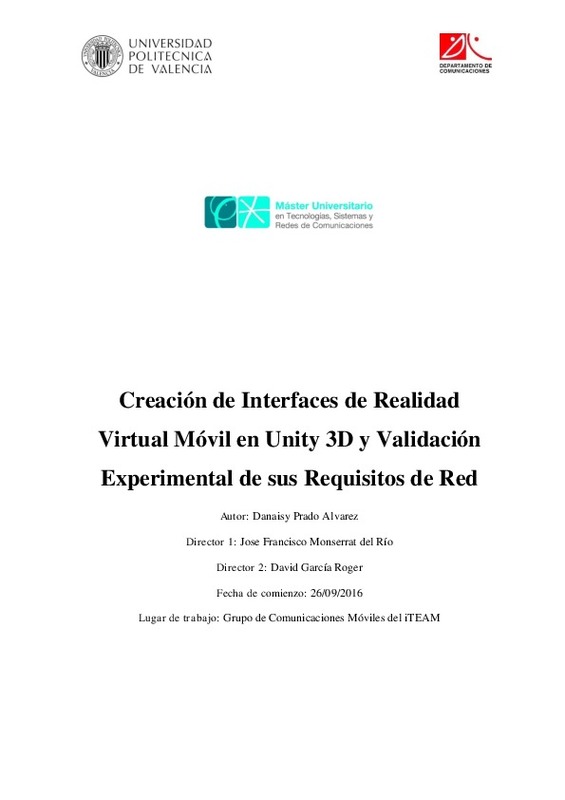JavaScript is disabled for your browser. Some features of this site may not work without it.
Buscar en RiuNet
Listar
Mi cuenta
Estadísticas
Ayuda RiuNet
Admin. UPV
Creación de Interfaces de Realidad Virtual Móvil en Unity 3D y Validación Experimental de sus Requisitos de Red
Mostrar el registro completo del ítem
Prado Alvarez, D. (2017). Creación de Interfaces de Realidad Virtual Móvil en Unity 3D y Validación Experimental de sus Requisitos de Red. Universitat Politècnica de València. http://hdl.handle.net/10251/165145
Por favor, use este identificador para citar o enlazar este ítem: http://hdl.handle.net/10251/165145
Ficheros en el ítem
Metadatos del ítem
| Título: | Creación de Interfaces de Realidad Virtual Móvil en Unity 3D y Validación Experimental de sus Requisitos de Red | |||
| Autor: | ||||
| Director(es): | ||||
| Entidad UPV: |
|
|||
| Fecha acto/lectura: |
|
|||
| Resumen: |
[ES] El objetivo de esta tesina de máster es extender las funcionalidades de las soluciones de desarrollo de juegos para utilizarlas como herramientas de ingeniería. En concreto se utilizará la plataforma UNITY-3D y se ...[+]
[EN] The aim of this Master's thesis is to extend the functionalities of game development platforms to be used as serious engineering tools. In particular, the UNITY-3D platform will be used and a virtual reality platform ...[+]
|
|||
| Palabras clave: |
|
|||
| Derechos de uso: | Reserva de todos los derechos | |||
| Editorial: |
|
|||
| Titulación: |
|
|||
| Tipo: |
|
recommendations
Este ítem aparece en la(s) siguiente(s) colección(ones)
-
ETSIT - Trabajos académicos [2408]
Escuela Técnica Superior de Ingenieros de Telecomunicación







